Please share! If you work at a desk job, here is your guide to staying healthy during the day. Your body was designed for full range of motion, and simply standing does not optimize your physiology either. The key is movement, not simply standing statically. Sitting can also be healthy when done correctly. It is key to always maintain good posture. So try to keep your back straight, your feet on the ground, keyboard close to you, and monitor at eye level. Research from Dr. James Levine shows that for every hour we sit down, our life expectancy decreases by about two hours. For comparison, every cigarette smoked reduces life expectancy by 11 minutes. That means sitting down can be far more hazardous to our health than smoking, which is a shocking revelation for most. But, and this is very interesting, we cannot simply replace sitting with standing. Our body was designed for full range of motion, and simply standing does not optimize our physiology either.
STRETCHING In addition to staying active, it is also very beneficial for your health to stretch. Especially those tight hip flexors, the lower and upper back, and shoulder complex. Find simple stretching exercises that can alleviate pain. Laying over a Swiss ball for a few minutes can assist in stretching that lower back and open up the shoulder blades.
GET CONNECTED
If you have any questions please feel free to connect with DannyTheCoach. For help with creative development, from digital design to social media content, please reach out to PoeticaFilms.com. This video was produced by Poetica Film & Design. Poetica specializes in helping brands to find unique ways to tell meaningful stories.
0 Comments
Your brain is an extremely important organ. It is the hub of everything. It is in charge for learning, cognition, memory, thinking, and individual growth. Keeping your brain healthy is obviously critical. Brain autophagy is a process that allows your brain to regenerate, get rid of old and unhealthy cells, and replace them with new and healthier ones. The trouble is that as you age, there is an increasing risk of brain degeneration. Leading an unhealthy lifestyle and toxic environmental factors can lead to a decline in brain health and function. The good news is that making some lifestyle changes using natural brain-supporting strategies can help to enhance brain autophagy, support your brain function, and prevent brain degeneration. As stated, brain autophagy is critical for promoting brain health and preventing brain degeneration. There are a number of different strategies you can apply today to support your body’s ability to heal and repair brain cells.
I would be more than happy to discuss any of these strategies in more details. If you have any questions or would like to start a dialog, please contact me. Always Tired? There are many possible reasons for why you feel tired all the time. Some causes are very simple and easy to address, while others may be rooted in chronic conditions that require a more thorough approach. Fatigue can impact your life to the point where it's negatively affecting your work, relationships and other aspects. I found this great article that I'd like to share with you. Below are a few potential causes and how they can be addressed. And a list of very simple things you can do to improve your sleep. Check it out:
Besides the ones mentioned above, fatigue can come from myriad underlying medical conditions. The list below sheds light on the most common culprits:
So What Can You Do? Below a few practical solutions to help prevent being tired all the time - some easy tips for sleeping better at night:
For the full article, sources & references - click here.
5 Body Signs of Nutritional Deficiencies Nutritional deficiencies left undetected or without cause for alarm over long periods can lead to life altering health problems. Different areas of your body can signal that something is physiologically wrong. Being in tune with your body's needs and being aware of these signs of nutritional deficiencies are critical to whole body wellness. Optimal vitamins and minerals are required by the body to properly eliminate toxins from the body, promote the health needs of your digestive system, cardiovascular system, metabolism and total body strength. Signs can be both external and internal and can be caused by the over consumption of one vitamin or mineral which can leave your body out of balance and deficient in other minerals. Learn the 5 body signs of nutritional deficiencies below so that you can better detect how your body is functioning. Learn how to enable you to heal faster if you notice something is wrong. These small signs are fixable today and they can prevent you from long term health problems. Sign #1: Hair Loss and Skin Rash Nutritional deficiencies affect a person's entire life. Not only do these nutritional deficiencies lead to a decline in physical health but many problems can influence work and social life. Hair loss and face rashes may impact one's desire to feel comfortable in public settings and may be the first indicator that there is a hormonal imbalance or other physiological concern stemming from inadequate nutrient intake.
Supplements When biotin levels are low, many times other B vitamins are low as well. Such as B2, B6, folate and often B12. For general maintenance a supplement with 300-400 mcg (100-133% of RDA) of biotin daily is a good option. Sign #2: Oral Health Problems Oral health reflects the relationship you have with consuming proper nutrients in your diet. Please consider that many vitamins and minerals are responsible to protect the oral cavity. Nutritional deficiencies can manifest in various ways in the oral cavity and develop into more severe health challenges down the road. For instance, consider the following nutrients and there effects on supporting structures in the oral cavity:
These symptoms of nutritional deficiencies are often associated with vegetarians who do not consume enough essential nutrients through diet because animal products contain many of the fat soluble vitamins needed to maintain oral health. Individuals also susceptible to nutritional deficiencies in which symptoms manifest in the oral cavity include people with gastrointestinal diseases, thyroiditis, autoimmune disorders, and people who consume proton inhibitor medications Related Deficiencies Common vitamin and minerals associated with poor oral health include a complex of B vitamins including riboflavin (B2), B12 and niacin (B3) as well as minerals like iron and zinc. The effects of nutritional deficiencies for each nutrient listed above can result in the following problems:
Remedy Nutritional deficiencies in any of these nutrients can result in weakened immunity and a higher risk for infection. Unless you have specific dietary restraints, excellent protein sources containing iron, zinc and B vitamins are found in wild caught salmon, free-range poultry and organic and free range sourced eggs. Watch out for phytate containing foods such as grains, legumes and nuts. These phytic acids bind to minerals like zinc and iron and reduce our ability to absorb them. Always soaking and sprouting nuts and seeds removes the phytic acids and enhances the bioavailability of the nutrients in the nut or seed. Additionally, be sure to use fermented foods which have a higher amount of B vitamins and good bacteria and enzymes to enhance the digestive process. Add more vegetables to your diet high in vitamin C to boost the availability of iron into the body. Foods include kale, cruciferous vegetables like cauliflower and broccoli, tomatoes, red bell peppers and citrus fruits like lemons and limes. Especially if you follow a specific diet, it is crucial to receive B vitamins from foods like avocados and dark leafy green vegetables. Sign #3: Muscular Cramps in Legs Frequent muscle cramping in the calves, arches of the feet and a stabbing sensation in your toes may be a sign that you are deficient in one of the critical nutrients that work in balance to control other ions. You may just be working up a sweat more often than before which increases your loss of electrolytes. However, whether your cramps occur over short or long term periods this symptom should be treated accordingly.
Remedy Excellent sources of magnesium in foods are found in avocados, pumpkin seeds and unsweetened cacao while Brazil nuts and almonds contain high amounts of both magnesium and potassium. Both calcium and magnesium can be received in combination with a healthy ratio of vitamin D3 to regulate calcium absorption in fermented foods like kefir, yogurt and milk from 100% grass-fed animals. Coconut water and coconut water kefir are great sources of potassium. A good and effective combination includes doing 3 Epsom salt baths each week, 3 days of sunbathing at least 30 minutes with 40% or more of the body getting high quality sun exposure, using fermented foods and drinks like coconut water kefir and an avocado daily. In addition, I recommend using generous amounts of Real Salt on food and hydrating well throughout the day. Consume some dark green leafy veggies each day for calcium and anti-oxidants. Many essential oils have natural antispasmodic qualities, which help inhibit problems associated with spasms, cramps and muscle pulls. Some good ones include lavender, chamomile, rosemary or cypress. You can massage these onto your legs, diffuse them in your home and put them into your Epsom salt bath. Sign #4: Itchy Red Rashes, Acne & Blemishes Several skin problems are associated with nutritional deficiencies. Skin conditions such as psoriasis, eczema, severe acne and even skin pigmentation disorders may have you trying to alleviate the problem with skin moisturizers and anti-inflammatory drugs.
Related Deficiencies The World Health Organization (WHO) recognizes that vitamin A deficiency is a public health concern affecting more than half of the globe and vitamin D is virtually an epidemic considering 90% of the population is deficient in this critical nutrient. Most people are also deficient in the long chain omega 3 fatty acids EPA and DHA as well and this can result in more inflammation in the skin and sebum glands and the development of acne.
Remedy Foods rich in vitamin A include liver, organic eggs from pastured chickens, dark green vegetables, carotenoid containing produce like carrots and sweet potato as well as milk from 100% grass-fed cows. One of my favorite sources of vitamin A is organic, grass-fed butter or ghee. I use these generously each day. I love butter!
A great source of the long-chain omega 3 fatty acids EPA and DHA is through a purified fish oil. I personally recommend and use Nordic Naturals Cod Liver Oil because it has high amounts of fat soluble vitamin A, 1000 IU of vitamin D and a healthy dose of EPA and DHA. #5: Abnormal Sensations in Hands or Feet Have you ever experienced a tingling in your toes? How about a numbness in your hands or the sensation of pins and needles in your feet? These minor and seemingly insignificant symptoms can be a sign of a serious health problem. Symptoms may be slow to develop but become more severe and lead to serious health consequences over time. Related Deficiencies Vitamin B12 & Folate (Vitamin B9): Since the intrinsic relationship between vitamin B12 deficiency and disease was first recognized in 1849, researchers have fought to understand the many metabolic roles this vital nutrient plays in maintaining health. Vitamin B12 is involved in a key reaction that regulates nerve function, supports DNA synthesis and helps regulate specific amino acid levels like homocysteine from becoming toxic. Folate is another B vitamin involved in similar neurological pathways. A deficiency in vitamin B12 and folate are associated with inflammatory conditions throughout the body. However, severe problems that can arise from a vitamin B deficiency like Crohn's Disease may be masked by less problematic symptoms early on. One of these early body signs is neurological damage manifested as numbness or tingling in areas of the body such as hands and feet.
Remedy Foods containing a complex of B vitamins are primarily of animal origin such as meat, eggs, dairy and poultry. This is why vegans and vegetarians are at an increased risk of vitamin B deficiency. Although vitamin B12 is bound in protein in animal products, vitamin B6 can be obtained from meat as well as green leafy vegetables. Some individuals have genetic issues such as pyroluria that cause them to need much higher B6 levels. Other people have a dysbiotic gut and the bacteria are unable to produce adequate B6 levels. This is where fermented foods can be especially helpful sources of highly absorbable B6. Reasons for Nutritional Deficiencies There are several reasons why someone may have nutritional deficiencies. These include a diet that is low in micronutrients and high in sugar and processed foods. The lesser known reasons include low stomach acid and leaky gut syndrome which cause poor nutrient absorption. Additionally, poor blood sugar balance and chronic stress deplete key nutrients and lead to nutritional deficiencies. All of us have had one or more of these factors for a period of time in our life and it is quite possible you are struggling with one right now that is contributing to nutritional deficiencies in your body. Key Nutritional Tips: Above all, consuming a wide variety of nutritional antioxidants sourced from all the colors of the rainbow in fruits in vegetables can help prevent nutritional deficiencies. Consider eating a superfood every day and choose to have a salad as one of your meals. Be sure to choose organic produce to consume foods with the highest nutritional density.
Click here for the entire article, with references and additional info.
10 Tips To Stay Healthy, Sharp & Strong
1. The Plan I am a firm believer that exercise is a powerful instrument that greatly influences your aptitude to be completely healthy. Let me ask you: "Have you made the commitment to work out, but you’re just not sure where to start?" Does that sound like you? If so, I can help you. Let's connect and we'll work on a simple 8 week program can get you going. It will be tailored to your needs, your circumstances, your life. Nothing cookie-cutter here. Everybody is different and has different needs. I'll show you the ins-and-outs of a customized workout routine that fits your schedule AND budget. 2. Isometrics Isometric exercises are contractions of a particular muscle or group of muscles. During isometric exercises, the muscle doesn't noticeably change length and the affected joint doesn't move. Isometric exercises help maintain strength. They can also build strength. The muscles are stable, done in one position so that there is tension but no change in length. Isometric exercise is also known as static strength training. Examples include the plank and side bridge as well as the wall sit and many yoga poses such as chair and tree poses. Isometric exercise is one of the safest strength training techniques you can do. Why? Because, you do not have to lift heavy weight or move / burst with high intensity, rather you control the resistance and you control the results. You have immediate response to your body’s needs. 3. Tracking Inactivity is the fourth biggest killer of adults worldwide, responsible for 5.1% to 12.5% (average 9%) of premature deaths, and walking more could go a long way toward reducing this risk - says the WHO. Studies show that compared to women who averaged 2,718 steps a day, women who walked 4,363 steps per day were 41% less likely to die in the next four years, and taking 5,905 steps was associated with a 46% lower mortality risk. Women who took 8,442 steps were 58% less likely to die in the next four years, but additional analysis revealed benefits maxed out around 7,500 steps per day. So track your steps. 4. Yoga It can improve your brain health and brain function. Yoga can also help lower stress, stave off cognitive decline by strengthening brain regions involved in working memory, advance overall brain function and neuroplasticity, decrease body image dissatisfaction and anxiety, and much more. Research shows experienced yoga practitioners have greater gray matter volume in several brain regions compared to matched controls, suggesting it has neuroprotective effects. 5. H2O Please stay away from any sports drink or any energy drink. They're loaded with sugars, bad sodium and food dyes, toxic ingredients like artificial colors and high-fructose corn syrup. When exercising or doing other strenuous activities, be sure to drink sufficient amounts of pure, clean water to ensure proper hydration. Drink about half of your body weight in ounces. Example: at 180lbs you should be drinking about 90 ounces of pure water. I suggest adding a pinch of unrefined, unprocessed, unfiltered sea salt (electrolytes) and a squeeze of lemon juice (taste and blood cleanser). 6. H I I T I'm a big fan of this type of workout. High-intensity interval training (HIIT), a type of exercise that combines brief sessions of high-intensity activity with bouts of rest, can improve heart function in most people. In a study, a HIIT group also increased their VO2 max, which is the maximum amount of oxygen your body can handle while exercising; this can be utilized as a measure of cardiovascular fitness, by 15%. It can be hard to believe that shorter workouts can lead to similar or even greater gains than longer workouts, but the secret lies in the intensity. By pushing your body to near its maximum, you reap greater benefits faster. 7. Fasting Intermittent fasting covers a variety of different meal timing schedules, but generally speaking involves cutting calories in whole or in part, either a couple of days a week, every other day or daily. When you eat throughout the day and never or rarely skip a meal, your body adapts to burning sugar as its primary fuel, which down-regulates enzymes that utilize and burn stored fat. If you’re new to the concept of intermittent fasting, consider starting by skipping breakfast; eat lunch and dinner within an eight-hour timeframe, and make sure you stop eating three hours before you go to sleep. Let's connect if you have questions. 8. Stretching In just 15 minutes a day you may improve your flexibility and enjoy greater balance, an improved ability to perform daily living tasks and less pain in your shoulders and lower back. The technique you use matters, as doing static stretches just before a workout may reduce your muscle strength. Instead these stretches may be used at a time outside of your fitness routine or while working out "the kinks". It helps to finish your workout with a foam roller or "the Stick" as it also helps improve flexibility, mimics myofascial release treatments and improves blood flow to the area worked; research shows it reduces arterial stiffness, improves balance and increases flexibility 9. AM Workouts If you're in the habit of using time restricted eating, exercising before your first meal of the day will also allow you to take advantage of fasted exercise, which has a number of important metabolic benefits. Exercising while in a fasted state boosts fat shedding and maximizes the impact of AMPK, which not only forces the breakdown of fat and glycogen for energy but also plays an integral role in autophagy. Exercise and fasting together also yields acute oxidative stress, which benefits your muscle, and trigger production of BDNF, which helps rejuvenate your brain. 10. Balance your Meals is Key
Some use carbohydrates to fuel muscle during endurance races, but to gain muscle mass and lose fat, use healthy, high quality fat foods and intermittent fasting together with strategic meal planning and preparation. Muscle growth and definition also requires exercise and optimal amounts of vitamins A, C, D and B complex for protein synthesis, muscle repair and stress reduction. Muscle growth and strength are also important as you age to maintain independence and your ability to easily do activities of daily living, such as climbing stairs and carrying groceries If you have questions to any of these tips & suggestions, let's connect. Contact me anytime and let's start a conversation. I'm here to help. 3 easy tips A few healthy tips below to help you boost your immune system. Incorporating any of the following, or better yet, all three, into your daily routine can go a long way in strengthening your body's defenses.
Let's connect if you have any questions or need some help. 10 Tips for Working Successfully from Home We are all trying to keep ourselves and our loved ones healthy by limiting our social contacts. Therefore, more of us are working from home than ever before. While some of us work from home regularly, others are doing so temporarily. During the past several years, remote work has become both more widespread and easier to accomplish, given ready access to high-speed internet, video conferencing software, instant messaging, and a high-quality set of headphones. Below are 10 tips for successful remote work.
 1. Establish a dedicated workspace Working from home does not provide the natural boundaries of time and space that a workplace provides. You don’t leave your work behind by leaving your place of employment. Therefore, it’s vital to create some sort of physical boundary at home. Although if you are only working from home temporarily you might not have a dedicated home office, it’s important to find a room or a part of a room you can temporarily use as an office space to help you develop a boundary between your work and your home life. It's key to separate the two! Ideally, it will be a silent space where you won’t be interrupted by family members or other distractions. But, please do not use your bed, that needs to be set aside for sleep. Also an important aspect of finding a dedicated workspace. 2. Develop a morning routine Even though it’s enticing to roll out of bed and start working right away, or even check your email on your phone while you’re still in bed, it’s highly recommended to develop the same type of routine you would have if you were commuting to work. Wearing PJs and sweatpants all day can be awesome at first, but the novelty wears off pretty fast. Get up, take a shower, get dressed, put some face cream on, have breakfast, drink a big glass of water, take your supplements, have some coffee, exercise - whatever you would do if you were commuting. Keep your routine or develop a slightly modified version. It needs to work for you. 3. Establish time boundaries According to a 2019 survey, 43% more remote workers than onsite workers say they work more than 40 hours per week. Although this may be because they are enjoying what they are doing, or are caught up in a project they want to finish, or some other grounds, it’s very vital to establish a work routine. Particularly if you are working with co-workers in different time zones, it’s tempting to want to make yourself available over several time zones, which can result in a 10+ hour day. Although that isn’t the ideal arrangement, if it works best for you and your team, then be sure to build in time in the middle of the day for an exercise break, take care of personal business, go for a walk, hike up the mountain, or just relax and do some meditations.  4. Socialize with co-workers When you work in an office setting, part of your daily routine involves chatting with co-workers about non-work issues, whether it’s over lunch, brief chats in your office, by the bathroom area, or whatever. But working remotely you can have meetings with co-workers but they may be all business. Therefore, it’s important to build in a modest chat time - either at the beginning or end of a Skype meeting, via a brief IM chat, or other means. A day shouldn’t go by without a quick, “Hi, how are you doing?” between yourself and another co-worker. Otherwise, the well-known hermit syndrome can result. 5. Create a project schedule for yourself While there are typically less distractions when working from home than in an onsite work setting, it’s still important to make a list of projects you are working on and assign priorities to the projects. It also helps to share your completion goals with your teammates to remain accountable. Sticking to a plan is easier when working remotely because you are less likely to be pulled into unforeseen meetings. If you’re working in a team where some are onsite and some are remote, then your strength as a remote worker is being able to complete projects - writing projects, for example - while onsite teammates might be involved in troubleshooting, organizing, and engaging in multi-team meetings. 6. Take a lunch break Don’t forget to eat. It's important! Stay well nourished. It’s easy to get caught up in what you’re doing and forget to stop for lunch. Take a good half hour away from your computer - and don’t sit and eat while working. If possible, go outside and have your lunch in the sunshine. Some fresh air can help clear your mind, too.  7. Don’t forget to move While you’re working onsite it’s more likely you will have occasion to get up and move - to go to a conference room for a meeting, to chat with a co-worker in another office, walk upstairs to chat with another department member and so on. But when working alone at home, it’s easy to sit for hours and forget to get up and move. Try to get up and move for at least a minute or two every 30-45 minutes. If necessary, set a timer to remind yourself. Walk up and down the stairs, walk around the house, chase the cat, or play with the dog, do 20 push-ups, squat 40 times, throw in 10 jumping jacks, add 20 lunges, you get the picture! 8. Drink water Just like any other time, it’s important to drink plenty of water. Keep a bottle of water next to you to sip on throughout the day. This will also cause you to get up and move once in a while. Ideally, you drink half of your body weight in ounces every day. YES, every day. So for example, if you're 200lbs, you should drink at least 100 ounces of water. Just in case you don't like water, squeeze a little bit of lemon juice in your water and add a pinch of clean, unrefined, unfiltered, unprocessed sea salt. This will also help you add vital trace minerals back into your system along with natural electrolytes. 9. Remote doesn’t mean less than Even though remote work has become the format of choice for some large companies, the stereotype image of the remote worker as a slacker in PJs lounging on the couch still exists. It’s easy to feel inferior, less than, that you’re missing out on important information, etc. In fact, there is even a syndrome - impostor syndrome - that describes the insecurities associated with remote workers. Remember, you are still a valuable member of your team. If you feel out of the loop, schedule a meeting with someone who can bring you into the loop.  10. Create a hard stop When you’re done for the day, be done - shut down your computer, turn off the lights, leave your work area and close the door. Unless there’s a good reason, don’t continue to check your email on your smart phone throughout the evening. There is always tomorrow. Establishing good remote work hygiene is just as important as developing good sleep hygiene and will go a long way toward making it a successful endeavor, whether temporarily or long-term. Can't go out? Can't go to the gym? Can't leave your family? BUT you still want to workout? No problem. JOIN our FREE workout session. It will be about 30 min. No equipment needed. If can bring some dumbbells and rubber bands, but it's not required. We'll be doing a bunch of body-weight exercises. Any level of fitness is welcome. I'll try to give you different options. If you like what you see, donations are welcome via Venmo handle "dannythecoach", but not required at all! Let's just have some fun in these crazy times. Facebook Events page for more details on upcoming sessions. Hope you can join me. Stay healthy my friends. Below are 10 super easy exercise options you can do at home, at your local park or pretty much anywhere you are, even the hotel room. All you need is a little bit of dedication, a little dash of will-power and you're on your way. Enjoy. If you like what you see, please subscribe to my YouTube Channel - click here. Here the YouTube Link to the Playlist - click here. Here a few simple yet very effective full-body workouts you can incorporate into your daily routine. Enjoy! Coronavirus: Symptoms & Natural Solutions The coronavirus, aka COVID-19, is all over the news and social media. It is a new strain of coronaviruses that first started in Wuhan, China in December 2019. It causes fever, coughs, shortness of breath, and upper-respiratory symptoms. In this article (original source link below), you will learn what the coronavirus is, how it spreads, what are its symptoms, and who is at risk of the infection. You will learn about some major lifestyle factors that can cripple your immune system and put you at greater risk of any virus or respiratory infection. This article will also show some natural solutions that can help to prevent viruses, respiratory infections, and illness this season and help you recover quickly if you do get sick. What Is the Coronavirus Coronaviruses (CoV) are a large group of viruses. Different strains may cause different illnesses ranging from the common cold to more severe diseases, such as the Severe Acute Respiratory Syndrome (SARS-CoV, or SARS) or the Middle East Respiratory Syndrome (MERS-CoV, or MERS). Coronaviruses tend to be zoonotic viruses, which means that they can be transmitted between people and animals. For example, SARS was transmitted from civet cats to humans, whereas the MERS originally spread from camels to humans. There are various strains of coronaviruses that are circulating between animals but have not infected humans so far. If you check the news and read about the coronavirus, they are referring to the novel coronavirus (nCoV) or Coronavirus Disease 2019 (COVID-19), a new strain of coronaviruses that haven't been previously seen in humans and has been spreading since late 2019. Symptoms Symptoms are similar to the flu and the common cold, however, may become severe and lead to complications in those with chronic health issues or in older people. The mortality rate is at 2 percent in Hubei providence in China where the outbreak started and less elsewhere. This is much better than SARS, which had an over 10 percent mortality rate or MERS which killed about 35 percent of those infected. The CDC currently believes that the incubation period of the virus can be up to 2 weeks, and symptoms may appear within as few as 2 and as long as 14 days after exposure to the virus. This is very similar to what we’ve seen in the Middle Eastern Respiratory Syndrome (MERS) back in 2012. Symptoms of the coronavirus infection are very similar to symptoms of the flu (influenza) virus. Based on what we know, symptoms may include:
Symptoms may range from mild symptoms to severe. In some cases, people may develop a more severe illness, such as bronchitis or pneumonia, and in severe situations, it may result in death. Who Needs to Watch Out?
According to the current understanding, the coronavirus spreads very similarly to other coronaviruses and other upper-respiratory infections. The virus mainly spreads person to person between people who are in close contact, or within 6 feet, of each other. It spread via respiratory droplets coming from an infected individual's coughs or sneezes. When a healthy person nearby inhales these droplets into their lungs, they may get infected. While this is not the main way to get sick, the virus may also spread by touching one's own mouth, nose, or eyes after touching an object or surface with the virus on it. Based on what we know, the coronavirus is the most contagious when someone is the most symptomatic, however, it may also spread before someone shows any symptoms. However, at this point, we don't know enough how contagious the coronavirus is. How Do You Get Infected by Coronavirus? What we know for certain is that in order to get infected by the coronavirus, you have to be in contact with someone who is sick or perhaps with an object a sick person has touched recently. According to February 26, 2020, there are 14 confirmed cases in the United States, 12 of these are travel-related and 2 are person-to-person spread. Out of the 80,239 cases, 77,780 are in China and most other cases are in the Western Pacific Region of Asia, including South-Korea and Japan, as well as Italy. If you are in the United States, at this point, there is little reason for you to be worried. However, since the virus is spreading, experts speculate that we may be facing a pandemic situation soon, it is important to be up to date and educated. For up-to-date information, including travel warnings, you can check the CDC's and the WHO's website. The BIG questions....So What Can I Do? 5 Lifestyle Activities That Cripple the Immune System Your immune system's job is to protect you from infections and illnesses. Your immune system is the one that helps you recover if you get sick. Having a strong immune system is absolutely critical to protect your body against viral infections, including the coronavirus. The problem is that there are several lifestyle activities that many people engage in that can cripple your immune system and make you more vulnerable to illness. The top 5 lifestyle factors that may prevent your immune system from functioning optimally. Here the short list - details below:
Top 10 Natural Solutions For Coronavirus There are currently no vaccines to prevent the coronavirus and there are no anti-viral or other medications to treat the illness. Supporting your immune system is absolutely critical when it comes to the prevention and treatment of the coronavirus and other respiratory viral infections. Below are 10 natural solutions to boost your immune system and protect your body from illness and infections. Remember, these are great tips not only when it comes to the coronavirus, but for the common cold and the flu as well. 1. Eight Foods to Support Immune Health Eating a nutrient-dense diet is one of the best and non-negotiable ways to support your immune health. It is important that you eliminate refined sugar, refined oils, artificial ingredients, processed foods, and junk food, and instead, focus on a diet that’s rich in greens, vegetables, herbs, spices, fermented foods, fruits, and healthy fats. Certain foods are particularly beneficial for your immune health because they have higher immune-boosting properties than others. It is important that you add them to your nutrient-dense diet. These foods include:
2. Good Hydration If any way possible drink half of your body weight in ounces of clean water minimum a day. For example, if you're 200lbs you should drink 100 ounces of clean water every day! If you are exercising or doing physical labor, spending time out on the hot sun, sweating a lot in a sauna or hot tub, recovering from an illness or infection, or otherwise feeling dehydrated, make sure to drink more. To ensure that you drink high-quality, clean water, use a high-quality reverse osmosis system that purifies your water by removing all the toxins. Make sure to use a stainless steel or glass bottle to avoid toxic chemical residue from plastic bottles. It is also important that you eat plenty of hydrating vegetables and fruits and drink green juices, bone broth, or herbal teas in addition to your water intake. Avoid sugar, sugary drinks, energy drinks, and too much coffee that may dehydrate your body. 3. Good Sleep, Fresh Air & Daily Movement Keeping your body healthy is more than just food and water. Getting good sleep, fresh air, and daily movement are all crucial for a healthy immune system. Get 7 to 9 hours of quality sleep on a regular basis. If you are feeling sick, make sure to honor your body, and rest plenty. Get some fresh air on a daily basis. Go for a walk, do some grounding by standing or walking barefoot on grass or dirt, or just simply open your windows and air out the rooms. Do some daily movement. Exercise for 20 to 30 minutes 5 days a week, and keep an active lifestyle through nature walks, stretching, yoga, dancing, walking your dog, and playing with your kids. Even if you are feeling sick, it is important to stretch or do some small movement as much as you can handle. 4. Keep Stress Down & Practice Gratitude Keeping your stress levels down is key to your immune health. Practice gratitude daily. Upon waking, think about the things that you are grateful for. Stop and appreciate the small things throughout the day. Keep an evening gratitude journal. Say a daily prayer or engage in the spiritual practices that uplift you. Journal regularly. Try meditation and breathwork. Say daily affirmations. Practice positive thinking. Talk things out with your friends, family, or therapist. Make sure to have some 'me-time' regularly. Surround yourself with positive people and uplifting activities as much as possible. 5. Diffuse Essential Oils Diffusing essential oils may be beneficial for both the prevention and treatment of infections. They may help to open up your airways, reduce mucous, improve coughs, calm sore throats, and reduce sinus issues. Essential oils that may benefit coronavirus, cold, and flu symptoms include eucalyptus, rosemary, peppermint, frankincense, oregano, thyme, geranium, cinnamon, nutmeg, bergamot, cypress, and tea tree essential oil. These essential oils may offer antioxidants and immune-protective qualities. It is important to mention that some people may be sensitive to certain essential oils. Start out with a small amount, preferably, when you are feeling well. Pay attention to your body and reactions. 6. Garlic Salve For Coronavirus Whether you have the coronavirus, the flu, the common cold, or other upper-respiratory issues, if you are symptomatic, try homemade garlic salve for coughs and colds. It's simple to make and easy to use. Use:
7. Take Vitamin C for Coronavirus There is a reason mothers give vitamin C supplements and orange juice when you were sick as a child. Vitamin C is one of the best vitamins when it comes to illness. Research has shown that it has incredible benefits for lung infections and it is one of the most important vitamins for your immune system. Vitamin C rich foods include lemon, lime, oranges, mandarins, grapefruits, guava, strawberries, papaya, pineapples, kiwi, sweet green pepper, broccoli, and Brussels sprouts. Remember that sugar is the enemy of vitamin C, so make sure to eliminate any food with refined sugar and reduce your overall natural sugar (carb) intake as well. Try Thorne's "Buffered Vitamin C" supplement (Amazon link). 8. Optimize Vitamin D & Zinc Vitamin C is awesome, but let's not forget about Vitamin D and zinc either. They are both essential to support your immune system, yet most people are not getting enough. Sunshine is the best way to improve your vitamin D needs, however, with our indoor lifestyle or colder seasons, it is impossible to meet all your needs. To boost your vitamin D levels, try a daily Vitamin D/K2 supplement for both prevention and treatment. Zinc is another nutrient that people seem to not get enough through diet alone, especially when not eating a nutrient-dense, immune-boosting diet. This can lead to immune dysfunction and more infections and illness. To improve your zinc levels and keep illness way, eat lots of zinc-rich foods, including pumpkin seeds, asparagus, chicken, salmon, and grass-fed beef regularly. 9. Use Elderberry & Astragalus Elderberry and astragalus are fantastic for coughs, congestion, and other respiratory illness symptoms. Use them to strengthen immune defenses that defend against colds, the flu, the coronavirus, and other infections and to aid recovery if you get sick 10. Use Specific Herbal Support Formula Herbs are the best friends of your immune system. However, it is important that you are strategic when you are using herbal support and use a specific herbal support formula that’s created to support your immune system, lungs, and respiratory tracts. Find natural respiratory support formulas that use powerful blends of herbs and essential oils, including lovage root, eucalyptus leaf, peppermint left, lemon balm leaf, lungwort leaf, orange leaf, plantain leaf, chapparal leaf, menthol, elecampane root, lobelia flower, and peppermint essential oil, to encourage lung, sinus, and respiratory tract health. Source - click here. Here is a very simple strategy for you to try to help your digestion - Every time you eat a meal, chew each bite of food twenty-five to thirty times. Yes, twenty-five at a minimum. Your mouth is full of digestive enzymes. Therefore, by taking your time and chewing, you're giving those enzymes a chance to do their job. You're also allowing optimum time for your gallbladder to release bile into your stomach. Chewing thoroughly can also activate hormones that will make you feel fuller faster, stimulate hydrochloric acid to break down proteins, and even stimulate your parasympathetic nervous system so that you are not eating in a stressed state. So next time you are having dinner with friends, slow down and chew your food. You may want to put your fork and knife down while you're chewing. That simple little trick can help you focus on chewing your food more fully. 5 Ways Fasting Can Improve Your Lifespan & Overall Health Is fasting really good for you? These days, you can't have a health conversation without talking about fasting. Fasting is now considered a promising way to help people live longer, just one of the many health benefits of fasting we're now seeing in the research. How to slow down the negative effects of aging with fasting A recent literature review published in the New England Journal of Medicine has concluded that, based on years of prior data, fasting can help you live longer! This is consistent with other data from institutions such as the National Institute on Aging (NIA), the University of Wisconsin-Madison, and Louisiana's Pennington Biomedical Research Center, where researchers found that daily fasting improves health and longevity in animal models – independent of what or how much the animals ate! Here are five other benefits of fasting based on the current research:
5 tips on how to fast successfully
Let me know how it goes. Avoid These Top 10 Inflammatory Foods Inflammatory foods can be major players in the development of the suffering in our society. This is because the process of inflammation is at the root cause of most chronic health issues. Learn what foods you should eliminate and what diet to follow to reduce inflammation, pain, and disease. With so many dietary advice out there, it can feel confusing to find the right one. The truth is that eating healthy is actually rather simple. Once you understand what foods may damage and what foods may protect your health, you can finally eat a nutrient-dense diet with a worry healing your body with every bite. What Is Inflammation Inflammation is your body's natural defense mechanism to fight against potential harm, such as infections, injuries, and toxins. It is part of your body's inherent immune response that promotes healing an recovery. Inflammation itself is not bad. Acute inflammation helps you to repair tissue damage when you have an injury and help you recover from colds, illness, or exposure to allergens. The problem is chronic inflammation, which is the result of an excessive stress load on your body, including physical, emotional, and chemical stress. Being exposed to constant stressors, your immune system becomes overwhelmed and increases the inflammation response. This can lead to more white blood cells, cell changes, and eventually tissue and organ damage. Chronic inflammation plays a role in a variety of chronic pain symptoms and health issues, including metabolic syndrome, type 2 diabetes, Alzheimer's disease, non-alcoholic fatty liver disease, and autoimmune conditions. The Role of Diet & Inflammation Diet plays a major role when it comes to inflammation. An inflammatory diet that is low in nutrients is one of the main causes of modern-day inflammation. Cytokines are proteins secreted by your immune system to regulate your immune response. Certain foods can trigger your immune system and lead to the overproduction of pro-inflammatory cytokines and the underproduction of anti-inflammatory cytokines The good news is that your diet also plays a role in preventing and reducing inflammation. While, inflammatory foods, such as sugar, refined oils, and gluten may increase the risk of inflammation, eating an anti-inflammatory diet may help you to overcome chronic inflammation and improve your health. Major Nutritional Factors for Inflammatory Foods Several major factors that play a role in chronic inflammation. When we consume food it will have an impact on our physiology and these 3 factors are key considerations when it comes to the foods we choose:
Blood Sugar Impact An inflammatory diet with too much sugar may lead to blood sugar imbalances in your body. This may cause inflammation and the overproduction of inflammatory cytokines increasing your risk of insulin resistance and elevated blood sugar levels leading to further inflammation, pain, and disease. Damaged Fats in Foods Your body needs fats for fuel, but not all fats are created equal. Polyunsaturated fats, such as corn, soybean, safflower, and other vegetable oils are highly unstable and prone to oxidation when exposed to heat, light, or air. During the cooking processed they also become damaged or oxidized making them even more inflammatory and destructive to your health. These oils are particularly bad for the endothelial lining of your blood vessels and for your skin and greatly contribute to the formation of acne, aged spots and wrinkles. Chemical Toxins in Foods Environmental toxins are everywhere, in our air, food, water, and products. Long-term exposure to environmental toxins may overwhelm your immune system and increase chronic inflammation. An inflammatory diet with lots of processed, refined, and non-organic foods are high in toxins. Choosing and anti-inflammatory, organic, and healing diet, however, may lower inflammation. Top 10 Inflammatory Food List
Top 10 Inflammatory Food List Details
What To Do? - Healing Diet Follow a healing diet to reduce inflammation, lower risk of developing chronic disease and improving your overall health. Eating a healing diet can reduce inflammation in your body, stabilize your blood sugar, reduce toxic load, fuel your body with foundational nutrients, and support your healthy blood pH. Try these steps:
Why Magnesium Rich Foods Are Essential for Your Health Magnesium rich foods should be used in nearly every meal we consume. Our current society is plagued with magnesium deficiency affecting an estimated 80% of individuals in the United States today. The average standard diet consists of 175 mg/day of magnesium down from an average 500 mg/day representative of diets in the 1900's. Most people are just not consuming enough magnesium rich foods. Dr. Norman Shealy, M.D., Ph.D. is an American neurosurgeon and a pioneer in pain medicine. He says, "Every known illness is associated with a magnesium deficiency," and that, "magnesium is the most critical mineral required for electrical stability of every cell in the body. A magnesium deficiency may be responsible for more diseases than any other nutrient deficiency." The top 12 best food magnesium rich foods outlined below will allow you to replenish your magnesium levels and support your overall vitality and well-being. Essential Role of Magnesium to Health Magnesium plays a key role in intra-cellular health. It manages the electrical gradient within cells so that the nervous system is not easily excited. More than 300 enzymes alone require magnesium to perform their biological roles in tissue and organs. The body relies on optimal magnesium absorption for:
The RDA for magnesium ranges accordingly:
Most natural health experts agree that these levels are considerably lower than they should be and yet close to 80% of our population is not even getting this level. Calcium to Magnesium Ratio Unlike our ancestors whose balance of calcium to magnesium levels were equal, our lifestyle habits today lead to an imbalance in this key electrical gradient. The result is a 10:1 calcium to magnesium ratio. This ratio disrupts the healthy balance of electrolytes within cells making nerves more susceptible to stress and pain perception. Declining magnesium levels in Western societies is dictated by a wide range of variables. Most common are chronic stress and poor dietary habits such as high sugar intake, over consumption of processed foods and too little intake of plant-based nutrients found in the magnesium rich foods. Magnesium Deficiency Symptoms Deficiency can lead to a variety of health disturbances and diseases. Do you have any of the following top symptoms of magnesium deficiency?
A staggering list of widespread diseases is associated with magnesium deficiency. Some of these include Alzheimer's disease, type-2 diabetes, premenstrual syndrome, hypertension, cancer, multiple sclerosis, and chronic immune disorders. Consuming magnesium rich foods can make a world of difference in these conditions. Top Magnesium Rich Foods Consuming magnesium rich foods in your daily diet can help you reduce complications associated with metabolic and inflammatory issues. The biggest things that drain magnesium levels include blood sugar imbalances and chronic stress. If you notice you are under an increased amount of stress or have enjoyed a high carbohydrate meal or dessert, then look to consume more of these magnesium rich foods and consider adding in a good magnesium supplement which I discuss at the bottom of this article. Try to make at least 10 of these 12 magnesium rich foods staple parts of your daily nutrition plan.
Below are details on all of these 12 superfoods.
Source - click here. Overeating and what happens to your body. Post-Binge Biology (and 8 Things To Do Afterward)
Feasts happen on a regular basis. Candy is given and received as gifts. And there are parties immeasurable, at work, with family, with friends, where calorie-dense, rewarding food is handed out, like, well, candy. The holiday season is a practice in overeating, and it can be very hard to avoid. You may not want to even avoid it; there’s something to be said for letting loose now and again on special occasions, especially when holiday cheer is in the air. But what happens to your body when you overeat? And what can you do about it? The type of overeating most people do across the holidays is high-sugar, high-fat, and relatively low protein. These are your cakes and cookies. Your brownies and fudge. Your pie for breakfast. This is the worst kind of overfeeding you can do. Research shows that just six days of high-sugar, high-fat, low-protein overfeeding rapidly increases fat deposition in the liver and muscle. Seven days of overfeeding reduces whole body insulin sensitivity, inhibits glucose clearance, and impairs endothelial function. If you keep doing it, say, over the course of a month, bad things pile up. You get incredibly insulin resistant. Your liver fat increases. Your body weight and overall body fat increase. Your C-reactive protein increases, an indication of inflammation. A class of antioxidants called plasmalogens also increase, which means your body is fighting oxidative stress. One problem with the studies is that you have to distinguish between quality and quantity; overfeeding with different foods elicits different effects. For instance, in the study that looked at overfeeding’s effect on lipid metabolism, the subjects overate by eating more cookies, potato chips, and cheesecake and drinking an oil-based liquid supplement. Overeating a bunch of that junk food is different than overeating steak. In fact, research shows that overfeeding protein has little to no impact on fat or weight gain compared to carbohydrate or fat overfeeding. Also consider individual variability. Some people are “obesity prone.” Others are “obesity resistant.” In one study, obesity prone and obesity resistant subjects had different responses to three days of overfeeding. The obesity prone people saw their fat oxidation rates drop during sleep; they burned less fat. The obesity resistant subjects saw their fat oxidation rates unchanged during sleep; they continued burning fat like normal. So, when we talk about the effects of overeating, we have to keep in mind that the effects will differ between individuals and vary if you’re eating a pound of roast lamb versus eating half a pie. But the general point still stands: Overeating can make you gain weight, gain liver weight, induce oxidative stress, cause insulin resistance, increase inflammation, and make you sicker, fatter, and more unwell the longer it goes on. Here are 8 tips for scaling back and minimizing damage.
Details to these 8 tips:
Source - click here. Delicious Sugar Free Cookies The holiday season is time for family, celebration, and tasty food. While this can be a grand time to unwind and relax, many people tend to overindulge in many of the wrong foods, sending them several steps back in their health. Many people will choose to forgo the healthy eating for a few days and deal with the consequences later. But as many people would love to substitute traditional recipes for very similar ones that are more conducive to health. Look no further. Here you go – 4 of my favorite recipies: Keto Vanilla Almond Christmas Cookies
Ingredients:
Instructions:
Snickerdoodles Snickerdoodles are a classic holiday cookie. They are somewhat similar to the Vanilla Almond cookies, but with a winter spice added. The fiber and healthy fats make this a blood sugar friendly dessert recipe with the added anti-oxidant and blood sugar stabilizing benefits of cinnamon! If you are looking to make this holiday more of a ketogenic style, these are another great option.
Ingredients:
Instructions:
Snowballs This one is both nutrient-packed and festive. Combining a few simple ingredients and forming into shape makes for a simple, raw nutrition dessert that resembles a snowball! Please forgo the snowball fight with these, however. These use a combination of ground chia seeds, coconut flour, raw cacao powder, and natural sweeteners. Combined, these ingredients provide a powerful combination of omega 3 fats, plenty of fiber, and antioxidants.
Ingredients:
Optional Ingredients:
Instructions:
Banana Bread While this dessert is technically not sugar free, it is absolutely delicious and much healthier than what you could buy in a store. Made with whole-food ingredients, it is loaded with fiber, healthy fats, clean protein, and delicious flavor. If you are a banana bread person, definitely give this one a try this holiday season. It will fill your home with a delicious soul-warming smell that is perfect for the holidays. If you love banana bread and are concerned about the extra sugar, you can even substitute keto maple syrup or liquid stevia for the honey and maple syrup. Grain Free Banana Bread
Ingredients:
Instructions:
Let me know if you have any questions. Contact Us. Source - click here. Is It Harder to Be Skinny Today Compare to The 80-is?
This article below explains why it may be harder today to be skinny compare to 20 years ago. Keep on reading! If you have questions, let's connect! A study finds that people today who eat and exercise the same amount as people 20 years ago are still fatter. The 2016 study published in the journal Obesity Research & Clinical Practice found that it’s harder for adults today to maintain the same weight as those 20 to 30 years ago did, even at the same levels of food intake and exercise. The authors examined the dietary data of 36,400 Americans between 1971 and 2008 and the physical activity data of 14,419 people between 1988 and 2006. They grouped the data sets together by the amount of food and activity, age, and BMI. They found a very surprising correlation: A given person, in 2006, eating the same amount of calories, taking in the same quantities of macronutrients like protein and fat, and exercising the same amount as a person of the same age did in 1988 would have a BMI that was about 2.3 points higher. In other words, people today are about 10 percent heavier than people were in the 1980s, even if they follow the exact same diet and exercise plans. "Our study results suggest that if you are 25, you’d have to eat even less and exercise more than those older, to prevent gaining weight,” Jennifer Kuk, a professor of kinesiology and health science at Toronto’s York University, said in a statement. "However, it also indicates there may be other specific changes contributing to the rise in obesity beyond just diet and exercise." Just what those other changes might be, though, are still a matter of hypothesis. In an interview, Kuk proffered three different factors that might be making harder for adults today to stay thin.
The fact that the body weights of Americans today are influenced by factors beyond their control is a sign, Kuk says, that society should be kinder to people of all body types. "There's a huge weight bias against people with obesity," she said. “They're judged as lazy and self-indulgent. That's really not the case. If our research is correct, you need to eat even less and exercise even more” just to be same weight as your parents were at your age. Source: The Atlantic - click here Need help getting ready for your ski season? Want better balance and core strength? I may have a few exercises we can try together. Let's connect today! First snow has fallen in many places. What Natural Remedies Work and What Don't Watch out! The cold season is coming! Time under sunshine is down and with it are Vitamin D levels. People are confined indoors. Kids are walking virus carriers. And the lovely drug stores are advertising free flu shots. Guess what? It's that time of year. A few of you are probably already sniffling or maybe trying to disregard the pain of swallowing with a sore throat. Colds seem like an inevitability, maybe not so much since you've cleaned up your diet, but nothing is 100%. You most likely will get sick. You probably will catch a cold. Or someone close to you will. What can you do for yourself? For your sick kid or partner? Are there any natural cold remedies that actually work? Here you go. 12 Possible Natural Remedy Suggestions That Could Help
So, there you go: a good list of therapies, supplements, foods, and nutrients to include (or not) in your anti-cold regimen this season. If you have any suggestions, any recommendations, or questions, contact us or add your comments below. Source: Mark's Daily Apple - click here |
Author
DannyTheCoach Archives
January 2023
Categories
All
|








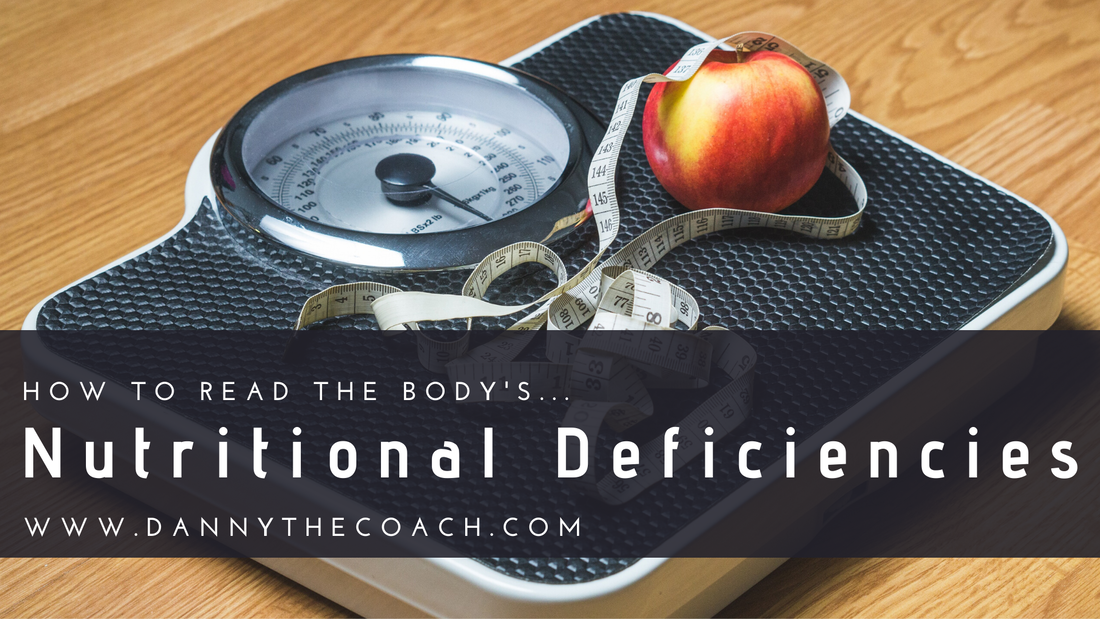
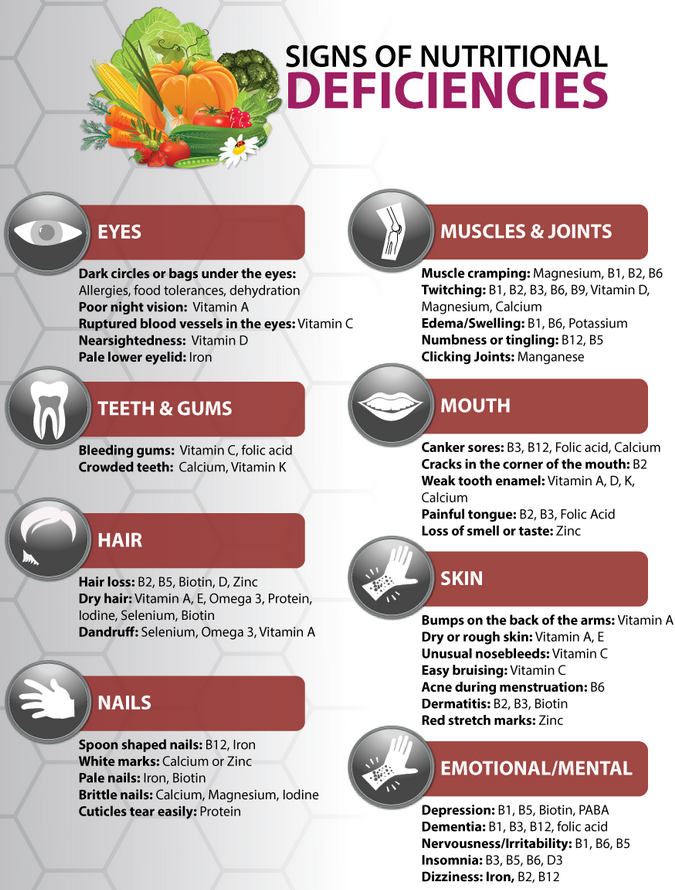

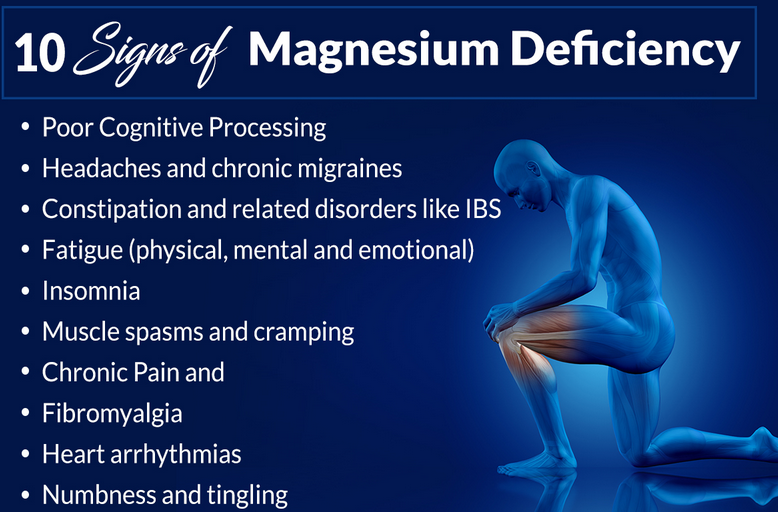
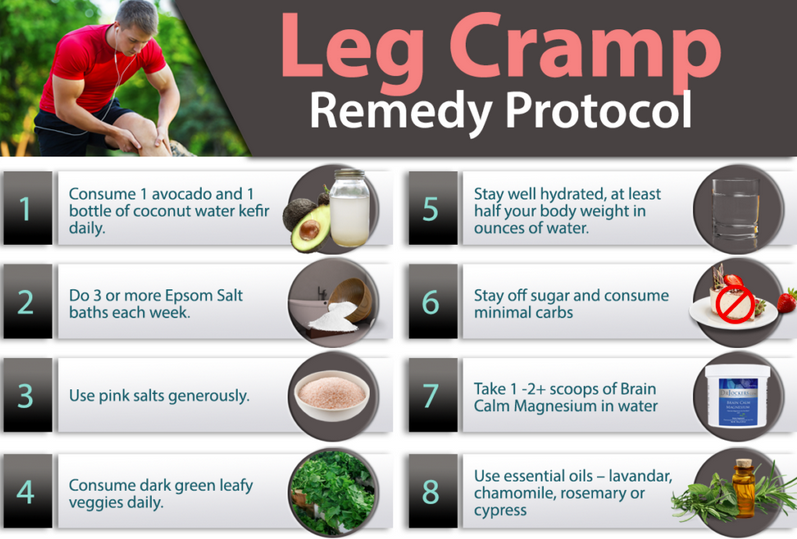









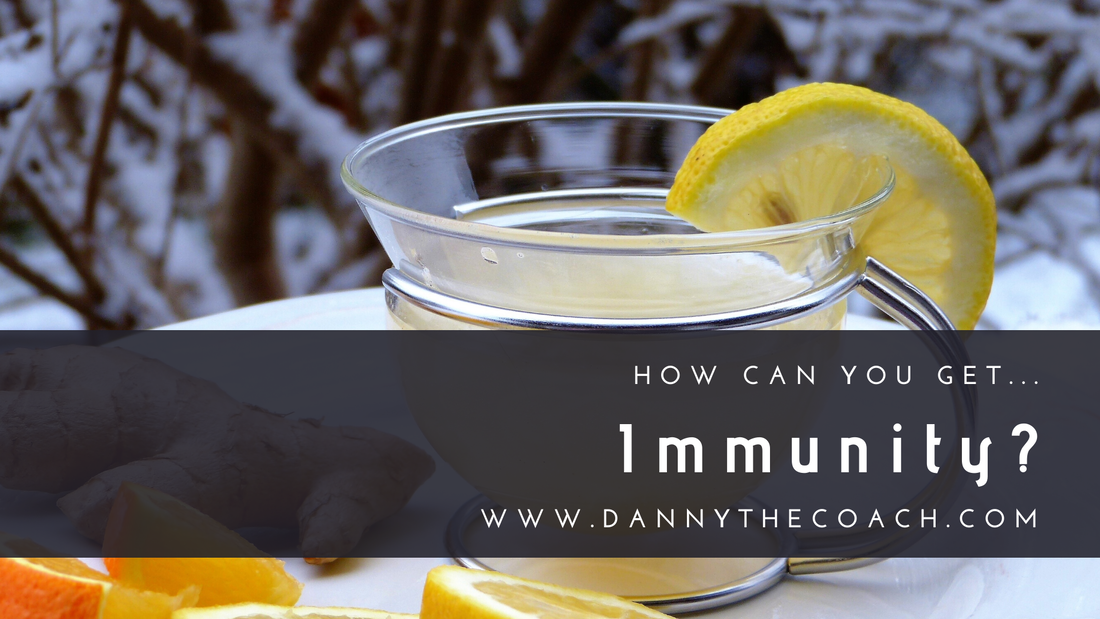

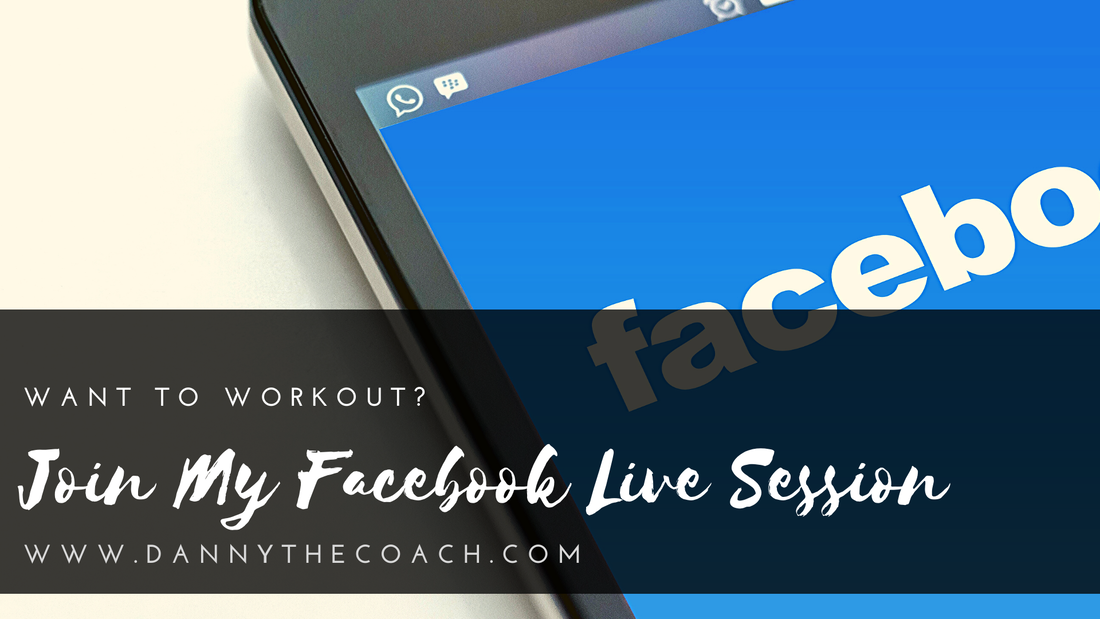

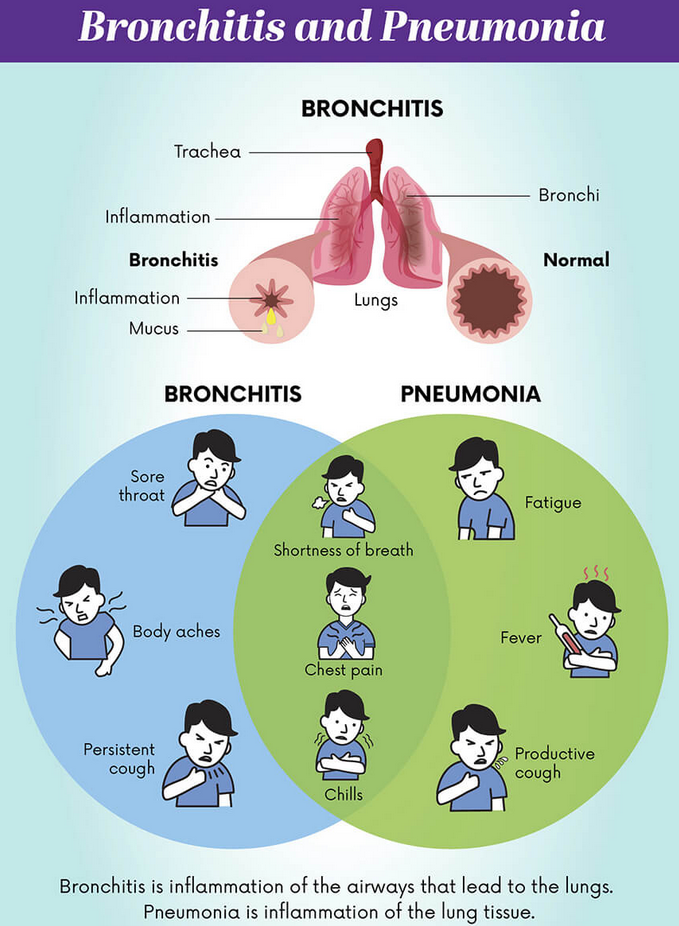
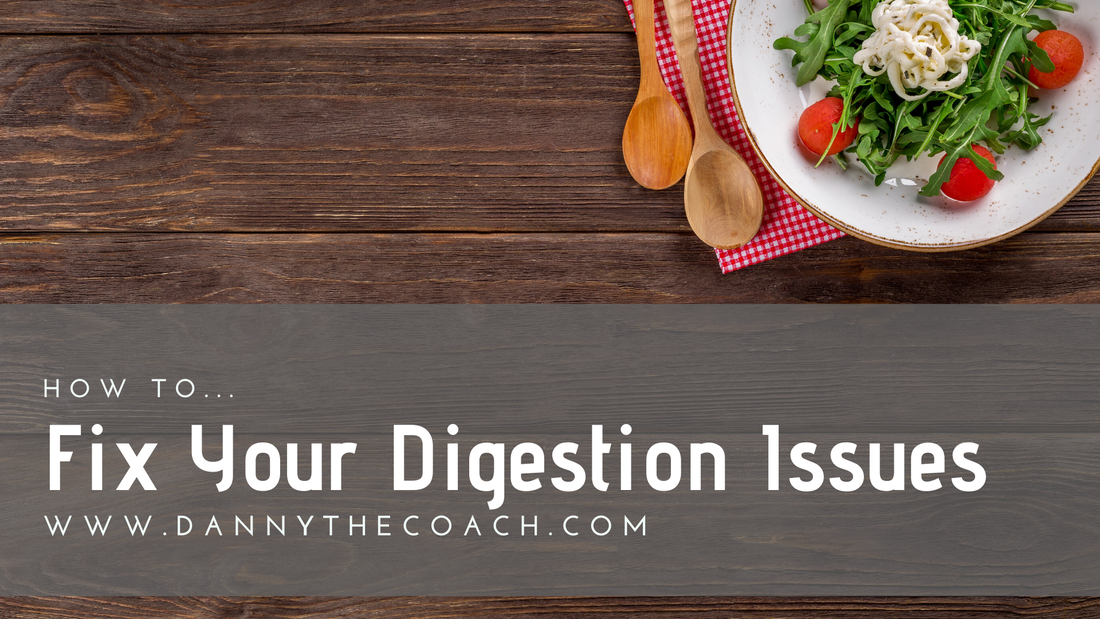

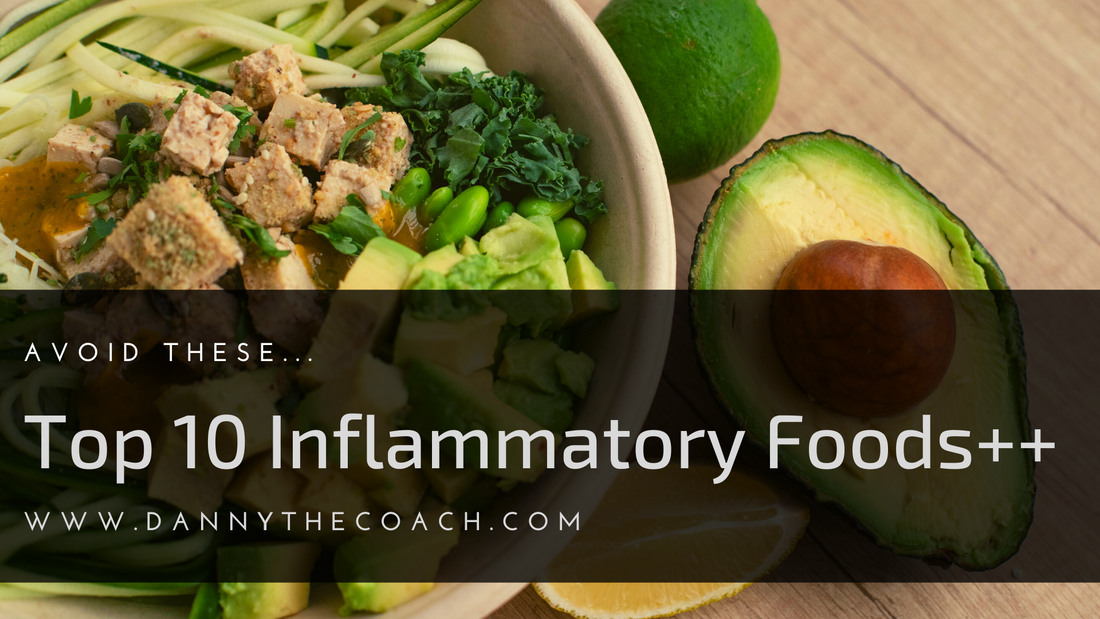

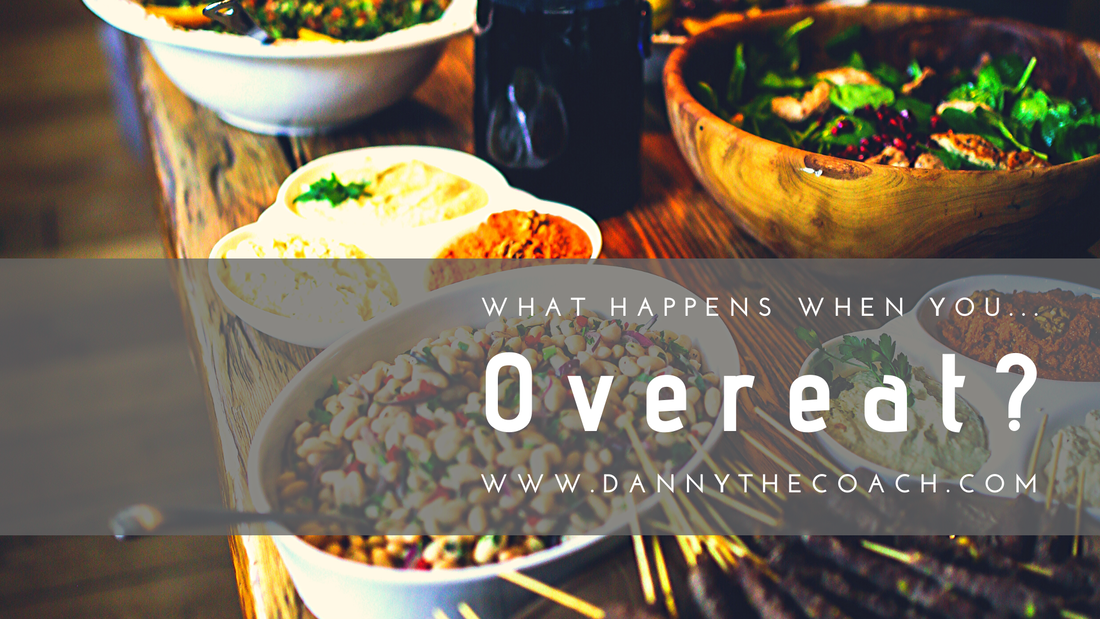
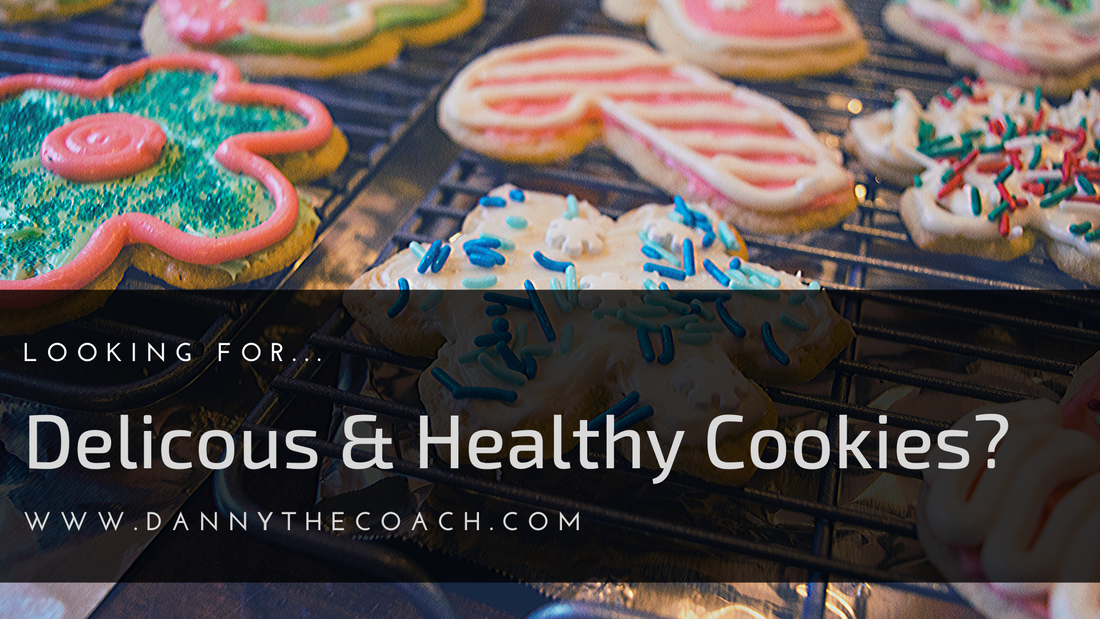

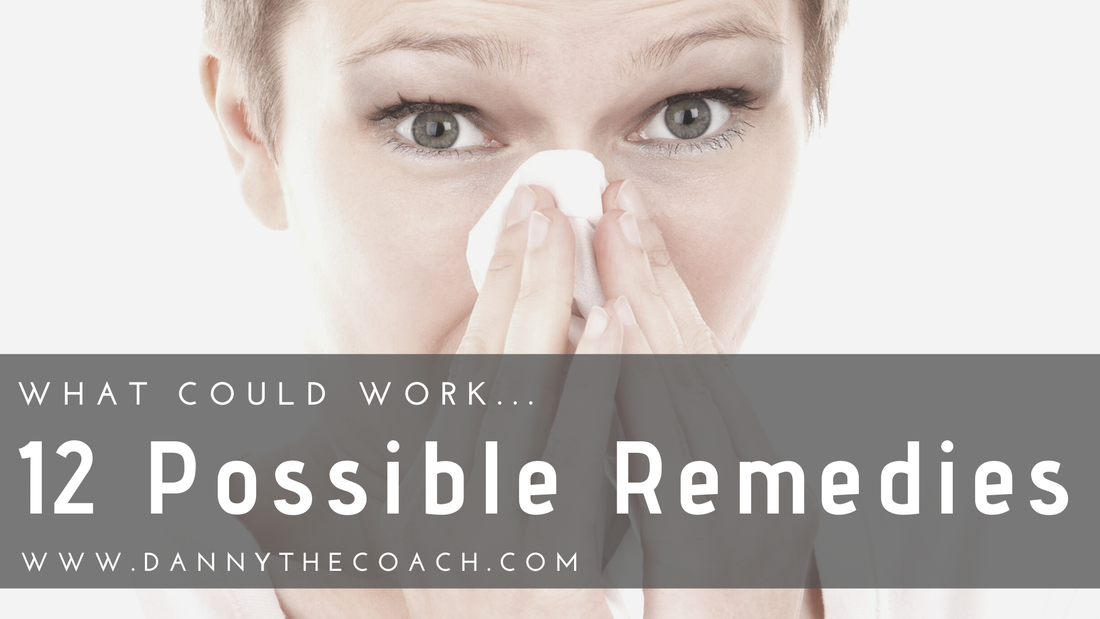
 RSS Feed
RSS Feed